Section 3 – Health, road and environmental safety, service, logistics
3.1 Understand the risks of the road and of accidents at work
Types of accidents at work in the transport sector, road accident statistics, involvement of lorries/coaches, human, material and financial consequences.
Statistics
There were 1,752 people killed on the roads in the UK in 2019. In the same period, there were 25,945 people seriously injured.
The cost of accidents
- Annual cost of motor vehicle accidents in UK is around £33 billion (2019)
- Economic damage caused by a fatal accident is £1.9m
- The average cost of a ‘serious injury’ accident is £228,029 and £2,029,237 for a fatal accident (2019)
- Average medical and ambulance cost per accident is £13,500
- Average cost of loss output is £22,500 and
- The ‘human’ costs average around £153,000
Accidents and speed
- At higher speed we have less time to react and consider potential hazards
- If there is an accident – it is likely to be more serious
- At 20 mph, 1 in 40 pedestrians will be killed (97% will survive)
- At 30 mph, 1 in 5 will be killed (80% will survive), but
- At 40 mph 9 in 10 will be killed (only 10% will survive), and
- Rain, snow, ice, fog and darkness, all increase breaking distance and/or reaction times
Vulnerable road users
Pedestrians, cyclists, motorcyclists, wheelchair users and horses and their riders are considered to be ‘vulnerable road users’. The term vulnerable is used to describe road users who are particularly at risk of injury if they are involved in a collision with other road users. Often, these road users do not hold a driving licence and have never taken a driving test so their appreciation of the difficulties of other road users may be limited.
Drivers can reduce the risk of collision with these vulnerable road users by:
- Improved vehicle control
- Improved spatial awareness
- Improved observation and use of mirrors, and
- Better forward planning enabling them to react earlier to what they see
Remember that pedestrians may have limited or no sight and may also be deaf. Older or disabled people may need more time to cross a road or react to oncoming vehicles.
Always slow down and give horses as much room as you can and never sound the horn, rev the engine or use air brakes near a horse.
Cyclists have the same right to the road as vehicle drivers and are not compelled to use cycleways where they exist.
3.2 Understand how to prevent criminality and trafficking in illegal immigrants
General information, implications for drivers, preventive measures, check list, legislation on transport operator liability.
Passport and visa controls
All commercial drivers will require a full passport. Visas are still necessary for some countries outside the EU, although a UK national should not require one in any EU member state. Visas are required for Turkey, Russia, Armenia, Belarus, Ukraine, all Middle Eastern states and most northern African countries. Visas must be obtained from the relevant national embassy or consulate before travel.
EU/Schengen Area rules. UK passports must have been issued less than 10 years ago to be considered valid for entry into the EU or Schengen Area (before Brexit UK passports had to have at least 6 months’ life left to be considered valid). They must also be valid for more than 3 months after your exit date. (Note: Some countries have been erroneously combining these two rules and requiring passports to have been issued less than 9 years 9 months ago on entry.)
EU/Schengen Area rules - expected late 2026. After the ETIAS (European Travel Information and Authorisation System) is launched, UK citizens will require ETIAS travel authorisation when entering any EU country (except Ireland) or non-EU Schengen Area country (Norway, Iceland, Liechtenstein and Switzerland), and this will cost about €7 when applied for through the official site. The ETIAS travel authorisation is valid for 3 years or until the associated passport expires (whichever is sooner). The passport used when applying for the authorisation must have at least 3 months’ life left.
Anti-smuggling and other security controls
HM Revenue and Customs and Border Force exist to maintain secure borders around the UK and to collect all required taxes etc. on goods brought into the country. In terms of border security, these agencies prevent the illegal import of certain goods and peoples across the borders.
Immigration controls
The Immigration and Asylum Act 1999 and subsequent legislation make it illegal to transport or assist any illegal person to enter the UK. A penalty of £10,000 per person can be levied upon the driver and operator of any vehicle found to be carrying illegal immigrants into the UK (under The Carriers’ Liability (Amendment) Regulations 2023). Where a penalty has been imposed, an operator has 30 days to make an ‘objection’ to the Immigration Services (payment must still be made within 60 days). Following an unsuccessful objection, an operator can appeal to the County Court within 28 days.
The law also allows for the seizure and subsequent selling of any vehicle used for this purpose. HMRC has issued guidelines for drivers as to what they might consider to be an ‘effective system’ of preventing illegal immigrants entering their vehicles.
HMRC guidance for drivers
For drivers, an effective system for preventing clandestine entrants includes:
- securing vehicles after loading using a padlock, seals, and tilt (TIR) cord
- checking vehicles after each stop, physically pulling security devices to ensure they are intact, inspecting the vehicle underside, windbreaker, roof and canvas
- recording checks on a vehicle security checklist, and
- conducting a thorough final check of the vehicle immediately before entering the port area
Plants, live animals, etc.
The International Plant Protection Convention was signed in Rome in 1954 and still forms the basis of control for the international carriage of plants in order to control the spread of pests and plant diseases.
A phytosanitary certificate is required by many countries to prove that plants and certain wood based packages (wood products including shavings, compost materials and pallets) pose no threat and carry no disease.
Documents for the driver and crew members (when driving outside the UK)
Drivers and crew members will require the following documents on international journeys:
- Full Valid Passport (issued less than 10 years ago)
-
National Driving Licence or International Driving Permit (IDP) appropriate to the class of vehicle being driven.
A UK photocard licence with appropriate LGV entitlement will suffice in any EU member state (unless your licence was issued in Gibraltar, Guernsey, Jersey or the Isle of Man). An IDP is often required when driving through a non-EU country
- Written authority to drive if the driver is not the owner or registered keeper of the vehicle. This letter must:
- be on appropriately headed paper if the name and address on the Vehicle Registration Document (V5C) is not the same as the person driving
- the letter of authority must include the vehicle registration number
- date of first registration; and the vehicle chassis number
-
Tachograph Records – driver card for any vehicle fitted with a digital tachograph driven in the last 28 days, plus any analogue charts for the same period. A Letter of Attestation still may be required in respect of any periods for which there are no records, e.g. periods where a driver has been on leave or completed only domestic work not requiring the keeping of tachograph records by certain enforcement authorities.
EU and TCA rules (not currently assimilated or AETR rules). Under EU 165/2014 article 36 (as amended by EU 2020/1054), and TCA annex 31b section 4(10), drivers are required to be able to produce records for the current day and for the previous 56 days to an authorised inspecting officer.
- ADR-controlled operations require the appropriate ADR Training Certificate
- European accident form (although not compulsory, is recommended)
It is also recommended that you get a UK Global Health Insurance Card (GHIC) when driving in the European Economic Area (EEA), and travel health insurance for all international journeys.
Documents for the vehicle (when outside the UK)
Drivers will also require the following documents in respect of the vehicle they are driving:
- Vehicle registration certificate (V5C), which should be the original and not a copy. If a hired vehicle is used, form VE103A and the hirer’s paperwork is an acceptable alternative
- UK Licence for the Community
- Vehicle nationality sticker/plate (UK)
- Green Card International Insurance Certificate – recommended but not obligatory. Without it, carriage of the certificate of insurance is advisable
- The ATP Agreement applies requiring vehicles and equipment transporting perishable foodstuffs to carry an ATP Compliance Certificate (or photocopy)
- ADR-controlled operations require the appropriate ADR Vehicle Approval Certificate
Documents for the goods
There are three main carnets used in the international carriage of goods:
- Transports Internationaux Routiers/International Road Transport (TIR)
- Admission Temporaire/Temporary Admission (ATA), and
- Carnet de Passages en Douane (CPD)
Drivers will require the following documents in respect of the goods they are carrying:
- TIR carnets for moving goods in a sealed load compartment or container
- ATA carnets for temporary moving commercial samples, goods and professional equipment to either a trade fair or exhibition outside of the EU
- A Community Transit form is required if the goods are not in free circulation
- CMR Consignment Note for all ‘hire and reward’ operations
- The ADR Agreement applies to vehicles transporting appropriate dangerous goods and requires a driver to carry a Tremcard
3.3 Understand how to prevent physical risks
Ergonomic principles: movements and postures which pose a risk, physical fitness, manual handling, personal protection.
Under the provisions of the Health and Safety at Work etc. Act 1974 employers must:
- Make an assessment of any risk – this assessment may enable risks to be eliminated entirely or, if it does not, then it will enable those remaining risks to be managed. Suitable equipment or protective clothing must be supplied, and safe systems of operation must be put into place
- Provide safe systems of working and safe equipment – as well as providing suitable machinery or equipment, an employer must make sure any necessary guards etc. are provided for that equipment
- Provide information, training and instruction – it is not sufficient just to supply ‘safe’ equipment. Employees must be trained to use that equipment
- Make suitable and safe arrangements for the storage, handling or transport of all articles and substances
- Ensure that suitable and plentiful entrances and exits are provided and maintained properly
- Provide a safe working environment – suitable facilities and arrangements must be provided for staff welfare at work. (This might be simply providing rest areas or may extend to the provision of canteen facilities and even to a staff counsellor and welfare service)
- Issue a written health and safety policy which sets out how that policy will be delivered, monitored and revised when necessary
- Provide a safety committee when required which may extend to a competent health and safety assistant, advisor or department. Following a written request to do so from at least two safety representatives, a safety committee must be set up within 3 months. Employers are also required to consult with union appointed H&S representatives about the effectiveness of health and safety measures and policies, and
- Provide free protective clothing where necessary
It is not only the driving of vehicles (any vehicles) that should be considered when carrying out a risk assessment of a particular activity. Other activities carry significant and special risks, and these should be identified so that the appropriate action can be taken. Among the activities a haulage operator should consider are:
- Coupling/uncoupling
- Reversing
- Getting into and out of the cab and the load area
- Use of lifting equipment – tail-lifts, forklifts, pump trucks, etc.
- Manual handling
- refuelling
Avoiding injury
Reporting of Injuries, Diseases and Dangerous Occurrences Regulations (RIDDOR)
The Reporting of Injuries, Diseases and Dangerous Occurrences Regulations 1995 require the reporting of certain incidents. Work related deaths, serious injuries (e.g. loss of limb or eye or where hospitalization occurs) must be reported to the Health and Safety Executive by law. Such incidents must be reported immediately by the fastest means possible – normally telephone although these incidents can be reported via e-mail. Written confirmation must be sent within 10 days.
Manual handling
The Manual Handling Operations Regulations 1992 apply anywhere where a load is required to be moved by human rather than mechanical means or effort. All employers must avoid the risk of injury by any means that is ‘reasonably practicable’.
Lifting loads in the correct way is important to avoid injuring yourself. A driver’s back, hands and feet are particularly at risk when carrying out manual handling tasks and all can then affect their ability to drive.
To reduce the risk of an injury when lifting it is important to follow the safe systems of work provided by the employer. Always use any equipment that’s provided to help you lift properly. If the load is too heavy or difficult or if you identify any hazardous handling activities, inform the relevant manager or person immediately. Never put others at risk as a result of what you’re doing and always try to use good techniques for lifting and handling, so they become a habit.
Before lift or moving any load, think about what you’re lifting and where it’s going. Is it possible to use anything to help you? Are there any obstructions in the intended route, do you need to move anything out of the way? Is it a two-person lift? (There are no legally enforceable maximum weights in relation to what a person might lift or handle. HSE do however recommend that a man should not lift more than 25 kg, and a woman should not lift more than 16 kg). Always start from a stable position with your feet slightly apart, one leg slightly forward of the other to keep balance. Start from a good posture. Get a good grip on the load to lessen the risk of it slipping or falling. Wherever possible, keep the load close to your body as this will make it easier to carry.
Avoid twisting or leaning sideways, especially while your back is bent. Keep your shoulders level and facing in the same direction as your hips. Move your feet to turn rather than twisting. Keep your head up – don’t look down at the load when you’ve got it securely as this will help to keep your back as straight as possible. Never lift or carry more than you can easily manage. If you’re struggling with a load, you’re far more likely to get injured yourself or harm another person.
The driver and any other persons involved in any loading or unloading operation should wear high visibility clothing, hard hat and protective boots. Other Personal Protective Equipment should be used as defined in any site-specific rules.
It is important that vehicles are loaded safely to avoid injury to the operator, a member of the public or other third party.
- Drivers must comply with any specific site safety rules
- Appropriate Personal Protective Equipment (PPE) must be used as defined in the site or operation safety rules
- Training and/or instruction and monitoring of the driver must be carried out to ensure safe practice during loading operations
- Adequate signage should be in place during the loading operation to warn others of the hazards
- Where possible, loading should be separated from other operations or heavily trafficked areas (this is not always possible of course and coach stations often pose a difficulty as passengers mix with vehicles)
- Compliance with any site safety rules should be monitored
- The loader and any associated equipment must comply with and be maintained to minimise the possibility of failure (see Lifting Operations and Lifting Equipment Regulations (LOLER) & Provision and Use of Work Equipment Regulations (PUWER) legislation). In the bus and coach industry the use of loading equipment is generally restricted to chair lift facilities installed to help disabled passengers get into or out of the vehicle
Preventing falls from the vehicle
Many people are injured by falling from vehicles each year. To minimise the risk of falling:
- Always open the door fully and use grab rails and steps provided for that purpose
- never jump from a vehicle, again, use the steps provided, using the ‘three points of contact’ principle
- always wear suitable footwear for the job (sandals or clogs may not be the most appropriate footwear), and
- always make sure steps and all access/exit areas are well lit
- When getting out of a vehicle, always check your mirrors before opening any doors. Watch out for other road users, particularly cyclists and motorcyclists when opening a door on to the road, and for pedestrians when opening a door on to the pavement.
Employees duties under the Health & Safety at Work etc. Act
An employee must:
- Cooperate with the employer in assessing any systems or the provision of equipment
- Use any equipment provided (e.g. gloves or protective shoes)
- Participate in any training offered
- Take reasonable care for their own health and safety and that of others who may be affected by their activities
- Tell the employer of any medical conditions which might affect their ability to handle loads (pregnancy, back pain, etc.)
- Report any hazards to a manager, supervisor or other nominated responsible person immediately (potential hazards would include badly worn gloves, damaged sack bearer or wet or slippery floor surfaces adjacent to areas where manual handling might take place), and
- Report any damaged straps, chains or other securing devices as well as any unsafe loads
Lifting Operations and Lifting Equipment Regulations (LOLER)
The Lifting Operations and Lifting Equipment Regulations (LOLER) require an employer to ‘thoroughly inspect’ such equipment every 6 months if it is used to lift a person or persons (e.g. a tail lift fitted to a truck or a disabled passenger lift fitted to a coach) or every year for other lifting equipment (e.g. a forklift truck). Such inspections should be carried out by a ‘competent person’.
Control of Substances Hazardous to Health (COSHH)
Suppliers of products have a duty to provide a safety data sheet with relevant health and safety information about any product that may be dangerous. This is in addition to the requirement to put advisory information on the package. Generally speaking, many suppliers do not provide such information until they are asked to do so.
Information contained in the data sheet should enable an employer to take reasonable precautions to minimise or eliminate danger to their workforce. Where the risk from chemicals is likely to be of a ‘domestic’ nature (i.e. similar to circumstances of home use), substances may be used without a specific, documented risk assessment, provided that users are following the printed instructions on the product labelling.
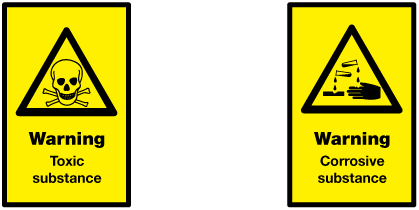
All products must be considered. Products such as bleach or other chemicals will all be clearly marked as ‘Harmful’ or ‘dangerous’ and may bear the appropriate symbols to denote their particular hazard but, wood dust, smoke, etc. are also substances which can be harmful.
3.4 Understand the importance of physical and mental ability
Principles of healthy, balanced eating, effects of alcohol, drugs or any other substance likely to affect behaviour, symptoms, causes, effects of fatigue and stress, fundamental role of the basic work/rest cycle.
The Eatwell Guide
Public Health England has published guidance on healthy eating under the title of ‘The Eatwell Guide’. This suggests that a diet should consist of 5 basic types of food and gives guidance on proportions etc. The five different types of food are:
- Fruit and vegetables
- Potatoes, bread, rice, pasta and other starchy carbohydrates
- Beans, pulses, fish, eggs meat and other proteins
- Dairy and dairy alternatives
- Oils and spreads
Eating healthily is about eating the right types of food and the right amount of food for your energy needs.
Fruit and vegetables
Fruit and vegetables are part of a balanced diet and can help us stay healthy. Fruit and veg should make up just over a third (40%) of your diet and you should aim to eat at least five portions (a portion is roughly 80g) of a variety of fruit and veg.
The ‘At least 5 a day’ message is based on advice from the World Health Organization, which recommends eating a minimum of 400g of a variety of fruit and vegetables a day to lower the risk of serious health problems, such as heart disease, stroke, type 2 diabetes and obesity.
Fruit and vegetables are a good source of vitamins and minerals including folate, vitamin C and potassium. They’re an excellent source of dietary fibre, which helps maintain a healthy gut and prevent constipation and other digestion problems. A diet high in fibre can also reduce your risk of bowel cancer.
Potatoes, bread, rice, pasta and other starchy carbohydrates
Starchy foods such as potatoes, bread, cereals, rice and pasta should make up just over a third (38%) of the food you eat. Starch is the most common form of carbohydrate in our diet. We should eat some starchy foods every day as part of a healthy diet.
Starchy foods are a good source of energy and the main source of a range of nutrients in our diet. Gram for gram they contain half the calories of fat. As well as starch, they contain fibre, calcium, iron and B vitamins.
Wholegrain varieties of starchy foods, and potatoes – particularly when eaten with their skins on – are good sources of fibre. Fibre can help to keep our bowels healthy and can help us to feel fuller for longer, which means we are less likely to eat too much. It is recommended that you choose wholegrain versions of foods where possible.
Examples of wholegrain foods:
- Wholemeal and wholegrain bread
- Wholewheat pasta
- Brown rice
- Wholegrain breakfast cereals
- Whole oats
Some types of fibre (present in fruits and vegetables such as apples, turnips, sweet potatoes, oats and pulses) can be partly digested and may help to reduce the amount of cholesterol in the blood.
Beans, pulses, fish, eggs, meat and other proteins
These foods are good sources of protein, vitamins and minerals and should make up just over 10% of your diet. You should consume a variety of these, rather than just meat, which has negative health and environmental consequences.
Pulses (also known as legumes) include beans, lentils and peas. They are a cheap, low-fat source of protein, fibre, vitamins and minerals, and they count towards your recommended five daily portions of fruit and vegetables.
Pulses include all beans, peas and lentils, such as:
- baked beans
- red, green, yellow and brown lentils
- chickpeas (chana or garbanzo beans)
- garden peas
- black-eyed peas
- runner beans
- broad beans (fava beans)
- kidney beans, butter beans (Lima beans), haricots, cannellini beans, flageolet beans, pinto beans and borlotti beans
Pulses are a good source of protein. This means they can be particularly important for people who do not get protein by eating meat, fish or dairy products. Pulses are also a good source of iron. They are also a starchy food, add fibre to your meal, and can make smaller portions feel more filling. Eating a diet high in fibre is associated with a reduced risk of heart disease and type 2 diabetes.
Fish. A healthy diet should include at least two portions of fish a week, including one of oily fish. Fish and shellfish are good sources of many vitamins and minerals. Oily fish – such as salmon and fresh tuna – is also particularly high in long-chain omega-3 fatty acids, which may help to keep your heart healthy. Where possible, you should buy fish that has be sustainably sourced, such as those that have been MSC certified.
Eggs are a good source of protein, but it’s important to store, handle and prepare them properly. Eggs are a good choice as part of a healthy, balanced diet. As well as being a source of protein, they also contain vitamins and minerals. They can be part of a healthy meal that’s quick and easy to make.
Meat is a good source of protein, vitamins, iron and minerals in your diet, and is one of the main sources of vitamin B12, but it can be high in saturated fat, which raises the level of bad cholesterol in the blood and can lead to coronary heart disease. Try to choose lean cuts and grill the meat, rather than fry it. If you do fry it, use kitchen towel to remove the excess fat from the meat before serving.
Red meat (e.g. beef and lamb) and processed and reformed meat (e.g. sausages, burgers, bacon, salami, ham and pâté) is linked to an increased risk of bowel cancer. Processed and reformed meat also tends to be high in salt, which can raise your blood pressure, increasing the risk of heart disease and having a stroke.
It is recommended that if you currently eat more than 90g of red or processed meat (cooked weight), that you should cut down to 70g. An English breakfast with 2 regular sausages and 2 rashers of bacon contains roughly 130g of red and processed meat.
Dairy and dairy alternatives
Dairy products such as milk, cheese and yoghurt (and dairy alternatives), are great sources of protein, vitamins and calcium. To make healthier choices, go for lower-fat milk and dairy foods. Dairy and dairy alternatives should make up just under 10% of our diet.
Our bodies need protein to work properly and to grow or repair themselves. Calcium helps to keep our bones and teeth strong.
However, much of the fat in milk and dairy foods is saturated fat. Eating too much fat can contribute to excess energy intakes, leading to becoming overweight. A diet high in saturated fat can also lead to raised levels of cholesterol in the blood, and this can put you at increased risk of a heart attack or stroke.
Cheese can form part of a healthy diet, but it’s a good idea to keep track of how much you eat and how often.
Butter is high in fat, so try to use it sparingly. Low-fat spreads can be used instead of butter.
Cream is also high in fat, so use this sparingly too. You can use plain yoghurt and fromage frais instead of cream, soured cream or crème fraîche in recipes.
When buying dairy alternatives, choose products that are lower in sugar and are fortified with calcium and vitamins.
Too much fat in your diet, especially saturated fats, can raise your cholesterol, which increases the risk of heart disease. Current UK government guidelines advise cutting down on all fats and replacing saturated fat with some unsaturated fat.
Cutting down on saturated fats is only one aspect of reducing your risk of heart disease, stroke and other cardio-vascular diseases.
A small amount of fat is an essential part of a healthy, balanced diet. Fat is a source of essential fatty acids such as omega-3 – essential because the body can’t make them itself.
Any fat not used by your body’s cells or to create energy is converted into body fat. Likewise, unused carbohydrate and protein are also converted into body fat.
Oils and spreads
Fat is an essential part of our diet and is required by our bodies to help absorb vitamins A, D and E. However, fat is high in calories and most of us consume far too much fat. Fat should only make up about 1% of our daily diet.
Saturated fats raise the levels of bad cholesterol in the blood, which can lead to blocked blood vessels and makes you more prone to heart problems and stroke. Trans-fats raise the level of bad cholesterol and lower the level of good cholesterol, making them particularly harmful. Trans-fats are used in some ready-made foods and cakes to extend shelf-life (in the form of hydrogenated vegetable oil), but most supermarkets have or are phasing their use out. Switching to oils and spreads with more unsaturated fats and less saturated fats has been proven to lower cholesterol.
Examples of food containing saturated fats:
- Fatty cuts of meat, sausages and pies
- Cheese, butter, ghee and lard
- Cream, soured cream and ice cream
- chocolate, biscuits, cakes and pastries
- Palm oil, coconut oil and coconut cream
Examples of food containing trans-fats
- Ready-made meals containing hydrogenated vegetable oil
- Quiches, pies and cakes containing hydrogenated vegetable oil
Examples of food containing unsaturated fats
- Olive, rapeseed, corn, sunflower oil
- Avocados
- Almonds, Brazil nuts and peanuts
- Oily fish, such as kippers, herring, trout, sardines, salmon and mackerel
Foods high in fat, salt and sugars
There are many foods that are high in fat, salt and sugar, including: chocolate, sweets, crisps, cakes, biscuits, puddings, butter, cream, ice-cream and full-sugar soft drinks. These foods are not needed in your diet and should only be consumed infrequently, in small amounts, as an occasional treat. When shopping, check the labels and avoid foods and drinks that are high in fat, salt and sugar.
Most people in the UK eat too much sugar. Cut down by eating fewer sugary foods, such as sweets, cakes and biscuits, and drinking fewer sugary fizzy drinks. The government recommends that ‘free sugars’, which are sugars added to food or drinks, or found naturally in honey, syrups and unsweetened fruit juices, shouldn’t make up more than 5% of the energy (calories) you get from food and drink each day. That’s a maximum of 30g of added sugar a day for adults, which is roughly seven sugar cubes. Added sugars are found in foods such as sweets, cakes, biscuits, chocolate, and some fizzy drinks and juice drinks – these are the sugary foods we should cut down on. Sugars also occur naturally in foods such as fresh fruit and milk, but we don’t need to cut down on these types of sugars.
Fluids and hydration
You should aim to drink 6-8 glasses of water, low fat milk or sugar free drinks, such as tea and coffee. Fruit juice and smoothies should be limited to a single 150 ml portion per day.
Sugary drinks, such as cola, lemonade and some energy drinks, should be avoided as they are one of the main sources of excess sugar consumption amongst adults and children.
Alcoholic drinks. The UK Chief Medical Officers’ guideline for both men and women is that:
- You are safest not to drink regularly more than 14 units per week, to keep health risks from drinking alcohol to a low level.
- If you do drink as much as 14 units per week, it is best to spread this evenly over 3 days or more. If you have one or two heavy drinking sessions, you increase your risks of death from long term illnesses and from accidents and injuries.
- The risk of developing a range of illnesses (including, for example, cancers of the mouth, throat and breast) increases with any amount you drink on a regular basis.
- If you wish to cut down the amount you’re drinking, a good way to help achieve this is to have several drink-free days each week.
The old 1995 recommendation of 21 units for men in 2016 was reduced to 14 units in 2016 due a greater understanding of the increased cancer risks linked to drinking alcohol. Pregnant women should avoid drinking any alcohol during pregnancy to minimise the health risks to the baby.
Alcoholic drinks also contain calories, and account for 10% of added sugar in people aged 29-64 years old. A typical pint of lager contains ~136 kcal, a 175 ml medium glass of wine ~135 kcal and a 25 ml shot ~56 kcal – the actual calorie content will depend on the ABV (alcohol by volume) of the drink and the calorie content of any mixers. Two pints of beer contain more calories than a regular chocolate bar, which is something to think about if you are looking to lose weight.
Aside from the direct health risks and excess calories, alcohol also negatively affects your driving ability, which we will discuss below.
Drinking and driving
The limit for driving in the UK (excluding Scotland) is:
- 35 micrograms of alcohol per 100 millilitres of breath
- 80 milligrams of alcohol per 100 millilitres of blood, or
- 107 milligrams of alcohol per 100 millilitres of urine
In Scotland the limits are:
- 22 micrograms of alcohol per 100 millilitres of breath
- 50 milligrams of alcohol per 100 millilitres of blood, or
- 67 milligrams of alcohol per 100 millilitres of urine
It takes 1 hour for a healthy liver to process 15 millilitres (1½ units) of alcohol.
Alcohol remains in the blood for several hours and could therefore affect your driving ability and reaction times the next morning. It also reduces the quality of sleep, and a lack of good quality sleep also negatively affects your driving. If you know you are on duty, particularly on an early shift, avoid drinking alcohol the night before.
DVLA will inform the Traffic Commissioner wherever an LGV licence holder is convicted for drink driving offences.
The effects of alcohol:
- Makes drivers overconfident and liable to take more risks
- Slows a person’s reactions
- Impairs judgement (particularly of distance, time and speed)
- Affects vision
- Adversely affects co-ordination, and
- Reduces ability to concentrate
High Risk offenders
If a driver is considered as ‘High risk’ DVLA will require that driver to prove that they do not have a drink problem before re-issuing a licence.
You are a ‘high risk offender’ if you:
- have more than 2 convictions in 10 years
- were 2.5 (or more) times over the limit
- refuse to provide a sample, or
- were unconscious at the time the sample was taken
Drink-drive statistics
Around 11 people are killed and 40 seriously injured in drink/drive incidents every week.
Around 90,000 people are convicted of drink/drive offences in the UK every year.
Drugs and driving
- Around 18% of people killed in road accidents have traces of illegal drugs in their bloodstream
- Drugs have very similar effects to alcohol; Many prescription drugs (particularly cold and flu remedies) cause drowsiness and should not be taken while driving or operating machinery, and
- Endorsements for drug/driving offences stay on your licence for 11 years
Tiredness
Drivers should take a break from driving at least every 2 hours; Drivers (and planners and controllers) should also:
- Present themselves for work fit and well rested
- Ensure vehicle has reasonable airflow through it
- Take short walks during their breaks
- Ensure sufficient time for journey, and
- Plan journeys so that breaks or changes of activity are ‘designed in’
3.5 Understand how to assess emergency situations
Behaviour in an emergency situation: assessment of the situation, avoiding complications of an accident, summoning assistance, assisting casualties and first aid, reaction in the event of fire, evacuation of occupants of a lorry/bus passengers, ensuring the safety of all passengers, reaction in the event of aggression; basic principles for the completion of an accident report.
Definition of a ‘reportable accident’
A ‘reportable’ accident is one where another person is injured or where another person’s property is damaged, and you are unable to give your name and address to that person at that time.
Accident reporting requirements and documentation
If you are involved in an accident which causes damage or injury to any other person, vehicle, animal or property, you must:
- stop
- give your own and the vehicle owner’s name and address, and the registration number of the vehicle, to anyone having reasonable grounds for requiring them, and
- if you do not give your name and address at the time of the accident, report the accident to the police as soon as reasonably practicable, and in any case within 24 hours
If another person is injured and you do not produce your insurance certificate at the time of the accident to a police officer or to anyone having reasonable grounds to request it, you must:
- report the accident to the police as soon as possible and in any case within 24 hours, and
- produce your insurance certificate for the police within seven days
Information to be given
You must give your name and address and that of the owner of the vehicle (or your employer) to the other person (or persons) involved in the accident.
Evidence collection
If you have an accident report form in your vehicle, fill it in as soon as possible and make sure it is returned to your employer as soon as possible. Keep a copy of this for your own records.
If possible, take photographs of the main features of the accident. These should include different angles of the vehicles involved and any obstructions or other objects which might have had a contributory effect.
Take the names and addresses of all parties able to give them. This should include all drivers, passengers and other witnesses. If the police are involved take the name, number and station of the officer dealing with the accident.
Make note of the weather conditions and the road surface conditions at the time.
Note the time, place and date of the accident.
Assistance at the scene
If you are involved in an accident or stop to give assistance:
- use your hazard warning lights to warn other traffic
- ask drivers to switch off their engines and stop smoking
- arrange for the emergency services to be called immediately with full details of the accident location and any casualties (on a motorway, use the emergency telephone which allows easy location by the emergency services. If you use a mobile phone, first make sure you have identified your location from the marker posts on the side of the hard shoulder)
- move uninjured people away from the vehicles to safety; on a motorway this should, if possible, be well away from the traffic, the hard shoulder and the central reservation
- do not move injured people from their vehicles unless they are in immediate danger from fire or explosion
- do not remove a motorcyclist’s helmet unless it is essential to do so
- do not give a casualty anything to eat or drink
- do keep them warm by use of a coat or blanket
- be prepared to give first aid, and
- stay at the scene until emergency services arrive
If you are involved in any other medical emergency on the motorway, you should contact the emergency services in the same way.
A, B, C of First aid
Try to remember the A, B, C approach to first aid:
- Is the airway open and clear – if the casualty is conscious, remove anything that may be blocking the airway and causing the casualty to choke, if the casualty is unconscious, tilt their head and lift the chin to open the airway
- Is the casualty breathing normally? Listen and feel to check that they are breathing. If the casualty is not breathing but conscious, treat them for whatever is preventing them breathing e.g. an obstructed airway. If the casualty is not conscious, call 999 and start CPR (cardiopulmonary resuscitation); then
- Circulation, are there any signs of severe bleeding? If so, try to control the bleeding with a gloved hand or other dressing
Preparation of insurance claims forms
These should be completed as soon as possible after the incident so that the facts remain fresh in the minds of any witnesses and the person making the report. It is essential that sufficient time is made available for the correct completion of such documents as a claim could be lost through incorrect information or the omission of vital facts. A copy of the claim form should be made and kept on file for reference purposes.
Use of the European Accident Statement
The European Accident Statement is widely used across Europe and is mandatory in France. This statement simply records the details of the accident and does not admit fault by any party. The form can be downloaded from many internet sites.
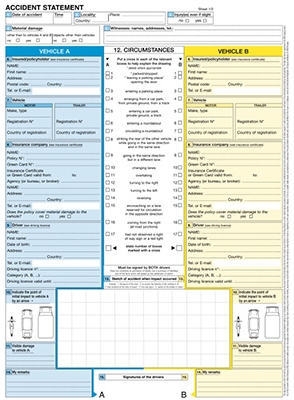
The facts which should be recorded on the form are:
- Name and address of all drivers
- Name and address of all witnesses
- Registration numbers of all vehicles involved
- Description of any injury or damage
- Insurance details
- Circumstances and sketch of the accident
- Date, time and place of the accident
- Signature of all drivers
European Health Insurance Card (EHIC), UK EHIC and UK GHIC
The European Health Insurance Card (EHIC) provides access to medically necessary, state provided healthcare, in all EU member states and Switzerland. Under the terms of the EU Withdrawal Agreement, your EHIC card remains valid until the card’s expiry date, when applying for a new card this will replaced with a UK Global Health Insurance Card (UK GHIC) or, if you have rights under the Withdrawal Agreement, a UK European Health Insurance Card (UK EHIC). EHIC, UK EHIC and UK GHIC cards are free and last for 5 years and you can apply to renew the card 6 months before it expires.
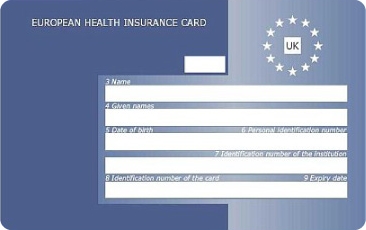
Which treatments are considered medically necessary is decided by the healthcare provider in the state, but some common examples include:
- Emergency treatment/visits to A&E
- Treatment for long-term/pre-existing medical conditions
- Routine maternity care (but not when going abroad to give birth)
- Chemotherapy, dialysis and oxygen therapy (pre-booking usually required)
The EHIC/UK EHIC/UK GHIC card covers you for ‘medically-necessary’ treatment to the same level that a national of the country that you are visiting would receive. This may not be to the same level as the NHS covers and it may not be free. Therefore, it is important that you have health insurance too, as medical bills can be substantial.
3.6 Understand how to adopt behaviour to help enhance the image of the company
The effect of the behaviour of the driver on company image, the role of the driver, people with whom the driver will be dealing, vehicle maintenance, work organisation, commercial and financial effects of a dispute.
Company image and customer service
The following are common service standards used to measure customer service standards or performance:
- Delivery of goods or service – right time, place, product; Product reliability/after sales service
- Doing what you say you will
- Polite and helpful staff
- Staff knowledge
- Waiting times
- Providing updates on delivery times and any delays to the office so that they may advise the customer, and
- Appearance (vehicle and driver).
In the haulage industry, the first thing that most customers see about the company they are dealing with is the vehicle and the second is the driver. Rarely does the customer deal with any of the managers of the company. The driver and the vehicle are the main issues which concern the customer or potential customer. It is them, and not the salesman or director, that ensures repeat or continued business. The driver is a very important aspect to the continued existence of the business, it is the driver who is the main ambassador of the business.
Delivery notes and proof of Delivery (POD)
Delivery notes are the paper trail for the consignor, the carrier and the consignee. These bits of paper are extremely important and cover several functions for several different people in the chain.
Delivery notes:
- explain what the load is to be transported, so the haulier knows what type of vehicle will be needed to carry this load
- provide information on the number of packages and, often, the individual weights of the package(s) or the weight of the complete load if it cannot be broken down. This information can be used by the driver to ensure that the load can be put on the vehicle without exceeding the gross or axle weights of the vehicle and the driver can ensure the correct number of packages have been placed on their vehicle
- often provide a load identification number to ensure the correct load is sent with the correct paperwork, and
- the delivery address of the consignee so the driver knows where to deliver the consignment
If a driver picks up a pre-loaded vehicle, then the paperwork given to them by the transport office should be checked against the load on the vehicle to ensure they match.
Once the driver has delivered the load, they need to get the customers signature either on a carbon copy of the paperwork or on the driver’s proof of delivery book (P.O.D.).
This is for proof of delivery and the consignment has arrived in an acceptable state of repair which the haulier might need to refute any claims at a later date.
If this is not the case then the customer can enter their reservations on the paperwork or reject part or all of the load. This will cause extra expense to the haulier as they will have to at best return it to their depot for holding and inspection for insurance claims or return it to the consignor.
Either way the driver will not be able to pick up their next load and another driver or vehicle will have to be dispatched to do this work.
Remember no signature on the paperwork means no payment for the job.
Driver vehicle first use checks
All drivers have a responsibility for the safety of the vehicle they are driving. This responsibility also extends to any trailer being pulled by their vehicle. It is important that all drivers carry out a visual inspection of their vehicle before taking it onto the road.
Carrying out effective daily vehicle checks will also provide some protection for drivers and operators against the possibility of Graduated Fixed Penalties awarded by DVSA and the police since May 2009. These penalties, under which a driver has 28 days to pay the penalty (£50, £100, £200 or £300) can be awarded for drivers’ hours, vehicle maintenance, Vehicle excise and operator licensing offences. Those concerning construction and use offences will generally come with additional penalty points for the driver’s licence.
Daily walk around check

-
Fill in tacho centre field details. Put chart/card into tacho, set to ‘other work’ then check:
- mirrors (including wide angle and close proximity) – position, correct adjustment and damage
- washers and wipers
- windows – open/close and glass is clean and not damaged
- horn, lights and indicators (lights/indicators will require an external inspection as well!)
- ‘O’ licence disc present, relates to vehicle and is in date. Number plate
- Tyres (depth of tread pattern – 1 mm across ¾ of width of the tyre, (1.6 mm for cars and light vans) cuts and foreign objects, nails, etc.) and wheel nuts – you must check all wheels/tyres including inner wheels – these often go unnoticed by the driver but not by a DVSA examiner
- Check fuel tank for leaks, proper closure of cap and security of fixings to chassis
- Security of battery
- Check fifth wheel (and other) coupling and all suzies (where appropriate)
- Check VTG6 plate and trailer registration plate for trailers that are going abroad
- Check bodywork of vehicle/trailer for damage. All damage needs reporting, any metal projections or damaged under-run bars may render the vehicle unserviceable immediately
- Check registration plate is present, secure and matches that of drawing unit
- Check all lenses are present on the trailer (where appropriate)
- Check spray suppression gear is present where necessary
- Check any load is secured and safe
- Complete defect book or ‘nil’ defect report and hand it in to a responsible person
The DVSA have also published their own guide for performing vehicle checks which can be viewed by clicking here.
Trailer registration
From 28 March 2019, trailers need to be registered for international journeys.
If you’re using a trailer abroad after 28 March 2019, you will need to register it through DVLAs Register Your Trailer to Take it Abroad service.
The trailer registration scheme came into force on 28 March 2019 as a result of the UK ratifying the UN 1968 Vienna Convention on Road Traffic. Trailers in the mandatory categories must be registered when used internationally in countries that have ratified the convention.
Registration is mandatory
Registration is mandatory for all commercial use trailers travelling internationally with a gross weight of over 750 kg.
Registration is also mandatory for non-commercial use trailers that travel internationally and have a gross weight over 3,500 kg.
Non-commercial trailers that weigh less than 3,500 kg can be registered voluntarily but there is no legal requirement.
Tyres
The tyres on a vehicle up to 3,500 kg must have a tread depth of at least 1.6 mm around the complete circumference of the tyre and across ¾ of the width of the tyre. Those on a vehicle in excess of 3,500 kg must be of at least 1 mm depth. There must be no cut exceeding 25 mm in length or exposing any wire or cord. Tyres must also be free from any lump or bulge caused by delamination of the fabric. Tyres must be properly inflated and suitable for use with other tyres (i.e. cross-ply and radial mix). Tyres fitted to the front steered axles of lorries must have a clearly legible date marking and must not be over 10 years old.
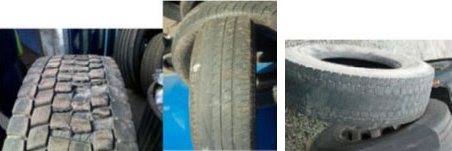
Wheel nuts
Check for security – look for tell-tale rust marks which suggest that water may have got behind the nut or shiny metal surfaces around the nut showing that the nut has worked loose. Some vehicles are fitted with wheel nut indicators which will show if the nut has moved.

Seat belts
Goods vehicles exceeding 3,500 kg maximum gross weight first used on or from 1 October 2001 must be fitted with a three point seat belt. Where fitted, seat belts must be worn unless the driver or operation is exempt from the requirement to wear them (e.g. medical condition, short journey etc.)
Flashing amber beacons
Flashing amber beacons must be used by vehicles which cannot exceed 25 mph on a dual carriageway where the permitted speed limit is in excess of 50 mph. The beacons must be fitted so that they are not obscured by any load or trailer being drawn by the vehicle. A driver should check the operation of any beacons fitted to the vehicle as part of the daily vehicle check procedure.
Power take-off (PTO)
Many trucks are fitted with a PTO (power take-off) which allows various ancillaries and attachments to be powered from the vehicle engine. This power is provided via a shaft from the vehicle gear box. Typically, lorry-mounted cranes, tipper bodies and blowers can be powered via this device. The PTO shaft is normally controlled from inside the cab. Correct operation of this device should again, be part of the daily vehicle check.
3.7 Understand the economic environment of road haulage and the organisation of the market
Road transport in relation to other modes of transport (rail, sea, air), different road transport activities (transport for hire or reward, own account, auxiliary transport activities), different transport specialisations (road tanker, temperature controlled, etc.), changes in the industry (diversification of services provided, road-rail, subcontracting, etc.).
Intermodal operations
These are where the goods are carried via ‘intermodal containers’ on both road vehicles and trains or inland waterways at some part of their journey. The main advantages of intermodal transport over a pure road haulage journey are:
- It avoids certain restrictions for goods vehicles (weight, speed, etc.)
- Provides environmental benefits
- Provides the opportunity for crew to take rest whilst load is moving, and
- It allows for dangerous goods to be transported in tunnels where they may be prohibited by road
Low emissions zones
London and many other UK and European cities now levy charges related to vehicle emissions levels. There are over 250 low emission zones across 15 European countries that are planned or have been introduced. For more information, visit Low Emissions Zones Scotland, GOV.UK and Urban Access Regulations in Europe.
The London Low Emission Zone (LEZ) covers most of Greater London and operates 24 hours a day, 7 days a week, 52 weeks of the year. It initially affected only older, diesel engined vehicles (lorries, buses, coaches and minibuses and large vans exceeding 1.205 tonnes unladen weight). It now also affects some other more specialised vehicles including: 4x4 light utility vehicles, motor caravans, motorised horseboxes, breakdown and recovery vehicles, snow ploughs, gritters, refuse collection vehicles, road sweepers, concrete mixers, ambulances, fire engines, tippers, motorised hearses and removal lorries.
The London LEZ standard for goods vehicles and motor caravans over 3.5 tonnes gross vehicle weight, and buses, minibuses and coaches over 5 tonnes gross vehicle weight, were tightened to Euro VI for NOx and PM (particulate matter) emissions on 1 March 2021.
Goods vehicles between 1.205 tonnes unladen and 3.5 tonnes and minibuses up to 5 tonnes gross vehicle weight have had to meet Euro 3 (PM) standards since January 2012.
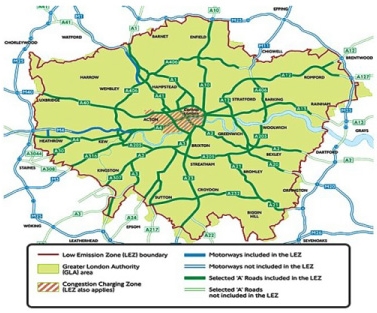
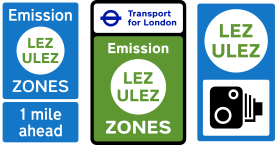
Charges for vehicles entering the London LEZ
A daily charge is levied as below:
-
for HGVs, lorries, vans, and specialist heavy vehicles over 3.5 tonnes gross vehicle weight not meeting Euro VI (NOx & PM) standards:
- £100 if the vehicle meets the Euro IV (PM) or Euro V (PM) standards
- £300 if the vehicle does not meet the Euro IV (PM) standard
-
for buses and coaches and minibuses over 5 tonnes gross vehicle weight not meeting Euro VI (NOx & PM) standards:
- £100 if the vehicle meets the Euro IV (PM) or Euro V (PM) standards
- £300 if the vehicle does not meet the Euro IV (PM) standard
- £100 for minibuses up to 5 tonnes not meeting Euro 3 (PM) standards, and
- £100 for vans and specialist vehicles between 1.2 tonnes unladen weight and 3.5 tonnes gross vehicle weight not meeting Euro 3 (PM) standards
The London Ultra Low Emissions Zone (ULEZ) was enlarged on 29th August 2023 to cover most of Greater London. HGVs, lorries, vans and specialist heavy vehicles over 3.5 tonnes gross vehicle weight and buses, coaches and minibuses over 5 tonnes gross vehicle weight do not need to pay an additional fee for entering the ULEZ, but they still need to pay the LEZ fees if they do not meet the LEZ emission standards.
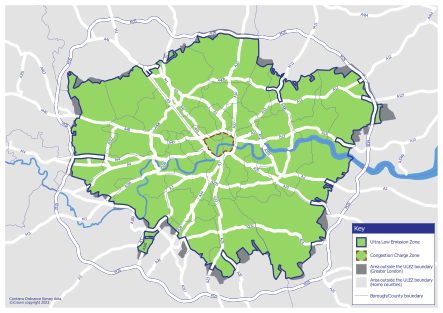
Charges for vehicles entering the London ULEZ
A daily charge is levied as below:
- £12.50 for minibuses up to 5 tonnes gross vehicle weight not meeting Euro 4 Petrol or Euro 6 Diesel (NOx & PM) standards
- £12.50 for vans and specialist vehicles up to 3.5 tonnes gross vehicle weight not meeting Euro 4 Petrol (NOx) or Euro 6 Diesel (NOx & PM) standards
- £12.50 for cars and private hire vehicles not meeting Euro 4 Petrol (NOx) or Euro 6 Diesel (NOx & PM) standards, and
- £12.50 for motorcycles, motor tricycles and quadricycles not meeting the Euro 3 (NOx) standard
European engine emission standards
The emission standards apply to all motor vehicles with a ‘technically permissible maximum laden mass’ exceeding 3,500 kg, equipped with diesel, petrol, natural gas or LPG engines. These regulations have regularly been updated and tightened to prevent use of the more highly polluting technology. The following outlines the stages of development to date:
- Euro I standards – introduced in 1992
- Euro II regulations – introduced in 1996. These standards applied to both truck engines and urban buses
- Euro III standards – introduced in late 1999
- Euro IV standards – introduced in 2005
- Euro V standards – introduced in 2008
- Euro VI emission standards – introduced in 2009 became effective from 2013
Ancillary services
Freight forwarding services
A freight forwarder is a person or organisation that collects goods together with a view to arranging their transport on to their final destination.
Warehousing and distribution services
These exist to assist in the bringing together of loads for easier more efficient distribution. They are often found in port, border or high density industrial areas.
Groupage
A groupage operator is one who accepts multiple small loads with the intention to bundle these together with other loads going to the same destination i.e. the operator of a 18 tonne rigid might accept several loads from different customers none of which would fill their vehicle on their own but, when consolidated together, will form a viable load.
Clearing houses
Clearing houses provide a service to transport operators and those seeking to move goods. They work simply by matching loads to suitable vehicles going to the required destination.
Types of vehicle/operation
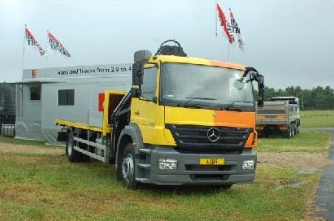
- Can carry overhanging loads
- Can be easily loaded with a crane, forklift or other lifting gear
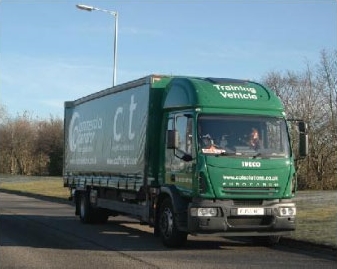
- Can be loaded from the side by a forklift
- Goods hidden from view
- Goods protected from weather
- Large space gives potential for advertising
- Lighter than rigid bodywork
- Curtains can be drawn back in high winds
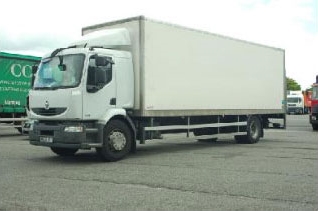
- Protects goods from weather
- Protects goods from theft
- Provides large space for advertising
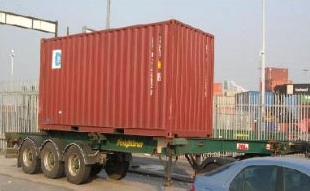
- Relative lightness increases payload
- Access to frame etc. eases maintenance
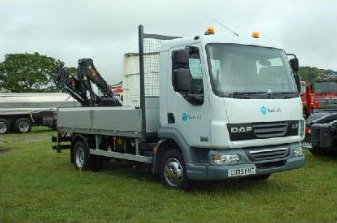
- Sides will retain small articles
- Still no height limit
- Relatively easily copes with certain overhanging loads
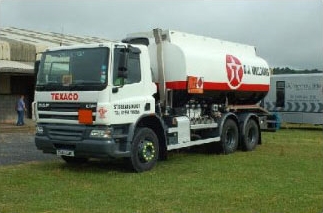
- Suitable for liquid or powder loads
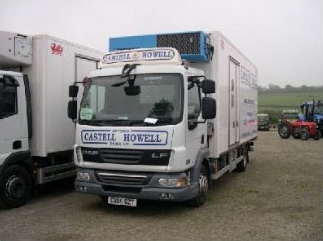
- Can carry refrigerated goods
- Can possibly carry other goods
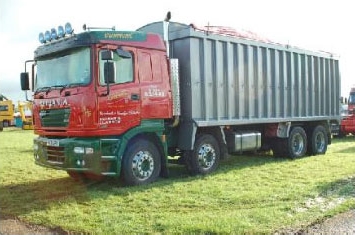
- Can carry and discharge bulk loads easily
- Could be used for limited range of other loads

- Meets the standard required for hire & reward animal transport
- Can provide accommodation for drivers
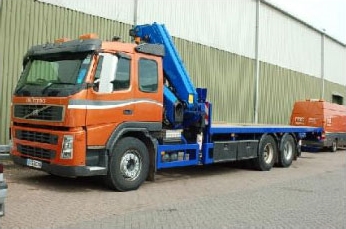
- Most of the advantages of a flat-bed
- Driver can load vehicle independently of others
Articulated vehicle
Articulated vehicles have the added issue of coupling to and uncoupling from the semi-trailer and drivers have to become familiar with this process.
Coupling
- Reverse the tractor unit close to but not touching the trailer
- Apply the handbrake, turn off the engine and remove the keys from the ignition
- Check around the trailer for any obstructions or hazards, check the load is secure
Once you have checked that it is safe to couple:
- Check that the trailer handbrake is applied
- Ensure the trailer is at approximately the same height as the fifth wheel. (If not, with air suspension fitted, raise or lower accordingly. If no air suspension is fitted wind the trailer legs up or down accordingly)
- Enter the tractor unit, start the engine and engage reverse (or RM on automatic units) move slowly backwards until the fifth wheel engages and the king pin locks
- Engage first gear and attempt to move forward at least twice to prove that the coupling is secure. If not secure, complete the above sequence again
- Apply the vehicle handbrake and stop the engine, remove the keys from the ignition
- Replace the king pin safety clip (dog clip)
- Connect the airlines and electrical connection and ISO lead if fitted
- Before raising the landing legs making sure the cogs are fully engaged. If the winding mechanism is stiff to operate, defect the trailer and secure the winding handle
- Release the trailer handbrake
- Fix vehicle registration number plate
- Check lights and load security before pulling off
- Before mounting the cab make a final check to ensure that the legs are up, the locking bar is closed and the safety clip (dog clip) is inserted, that all air and electrical lines have been connected, and
- Before leaving site carry out a brake test. No harsh braking
WARNING
Always ensure the tractor unit is coupled correctly and the park brake is applied before you connect the red airline. In the event of combination runaway when coupling air lines remove the red airline. DO NOT attempt to jump off or re-enter the cab. Removing the red airline will apply the trailer bakes.
Remember the last thing to do when coupling up is release the trailer brake. This is so if the tractor unit handbrake fails for any reason, then you can re-engage the trailer brake from a safe position.
Uncoupling
- Position the vehicle correctly on level ground
- Apply the vehicle handbrake and switch off the engine remove the keys from the ignition
- Turn on the hazard warning lights, (at night or in poor visibility leave the vehicles side lights on) this is to let other people know that you are working around the vehicle
- Dismount the vehicle (using 3 points of contact)
- Walk around the trailer and apply the trailer handbrake
- Before lowering the landing legs make sure the cogs are fully engaged. (If the winding mechanism is stiff to operate, defect the trailer and secure the winding handle.)
- Mount the vehicle catwalk and disconnect the air and electrical lines. Secure in their respected blank slots/holders
- Remove the fifth wheel clip (dog clip) and disconnect the fifth wheel locking bar (making sure that the bar is fully extended)
- Move to the rear of the trailer, and remove the number plate and secure
- Before mounting the cab make a final check to ensure that the legs are down, the locking bar is open the safety clip is removed, ensure that air and electrical lines have been removed
- If air suspension is fitted lower the air suspension to assist in the uncoupling and to minimize the trailer movement
- Enter the tractor unit and start the engine
- Engage first gear and pull forward slowly, watch the trailer movement throughout
- Once clear of the trailer (if fitted) raise the air suspension
Market segmentation
As any given ‘market’ grows, it develops into different sectors – a process which is called ‘market segmentation’. Once this stage is reached it becomes obvious that the market is divided into distinct sectors each of which attracts a particular customer. In the haulage industry this could be seen as the specialisation of participants, or hauliers, into certain sectors e.g. container work, general haulage, animal transport, light haulage, distribution etc.
Traffic law
Speed limits
Speed limits are signed with a sign bearing a red circle except for the national speed limit which is a black diagonal line on a white background.
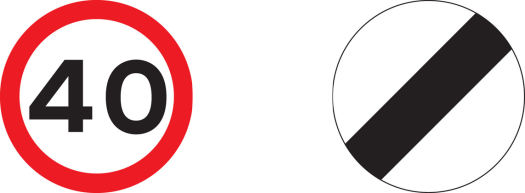
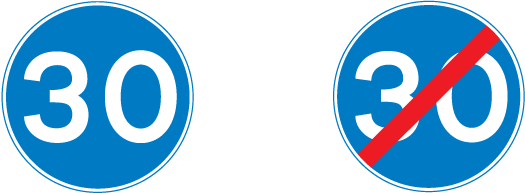
A speed limit of 30 mph (48 km/h), or 20 mph (32 km/h) in Wales, generally applies to all roads with street lights (excluding motorways) unless signs show otherwise.
Speed limits for goods vehicles (where no lower limit applies):
| Built-up areas, England, Scotland & Northern Ireland | Built-up areas, Wales | Single carriageways | Dual carriageways | Motorways | |
|---|---|---|---|---|---|
| Type of vehicle | mph (km/h) |
mph (km/h) |
mph (km/h) |
mph (km/h) |
mph (km/h) |
|
Goods vehicles (not exceeding 7.5 tonnes maximum laden weight) |
30 (48) |
20 (32) |
50 (80) |
60 (96) |
70† (112) |
|
Goods vehicles (exceeding 7.5 tonnes maximum laden weight) in England and Wales |
30 (48) |
20 (32) |
50 (80) |
60 (96) |
60 (96) |
|
Goods vehicles (exceeding 7.5 tonnes maximum laden weight) in Scotland and Northern Ireland |
30 (48) |
- | 40 (64) |
50 (80) |
60 (96) |
† 60 mph (96 km/h) if articulated or towing a trailer.
For speed limits that apply to special types of vehicles, such as oversized vehicles, see the Special types enforcement guide on GOV.UK.
Restrictions on waiting, parking and loading
Restrictions on parking, loading or waiting are generally signed by markings on the road or pavement. These signs are often accompanied by a sign on a post indicating the times that restrictions apply.


Goods vehicles with a maximum laden weight exceeding 7.5 tonnes must not be parked on a verge or pavement without police permission.
Graduated Fixed Penalty Scheme
The Graduated Fixed Penalty (GFP) scheme gives DVSA officers the power to offer Graduated Fixed Penalties in respect of a range of offences including:
- Drivers’ hours
- Construction and use
- Vehicle excise licensing, and
- Operator licensing
GFPs will be offered in the sums of:
- £50
- £100
- £200, or
- £300
Some of the offences, notably those concerning construction and use infringements, will come with penalty points or endorsements. If an offence will involve the imposition of penalty points, the issuing officer needs to be satisfied that the driver has less than 9 points on their licence as otherwise, that driver is likely to lose their licence under the ‘totting up’ procedure. Where a driver has 9 or more points, the matter will almost certainly be sent for prosecution in Magistrates court.
An authorised officer may offer no more than 3 fixed penalty notices at any one time and only one of these may be endorseable. If more than one of the offences carries the possibility of endorsement, then all offences must go to court.
Once issued, the driver has 28 days to pay the penalty or 10 days in which to appeal against that penalty. Where the driver is an employee, DVSA will send an Offence Notification letter to the operator. Payment can be made by post or telephone to the DVSA Graduated Fixed Penalty office in Swansea, direct to the DVSA officer or any DVSA test station.
The driver should carry the GFP notice with them at all times so that they can show that the offence has been dealt with and, once payment has been made, the receipt of payment becomes that evidence. This is particularly important for offences concerning drivers’ hours where another enforcement officer may uncover that same offence at a later time or date.